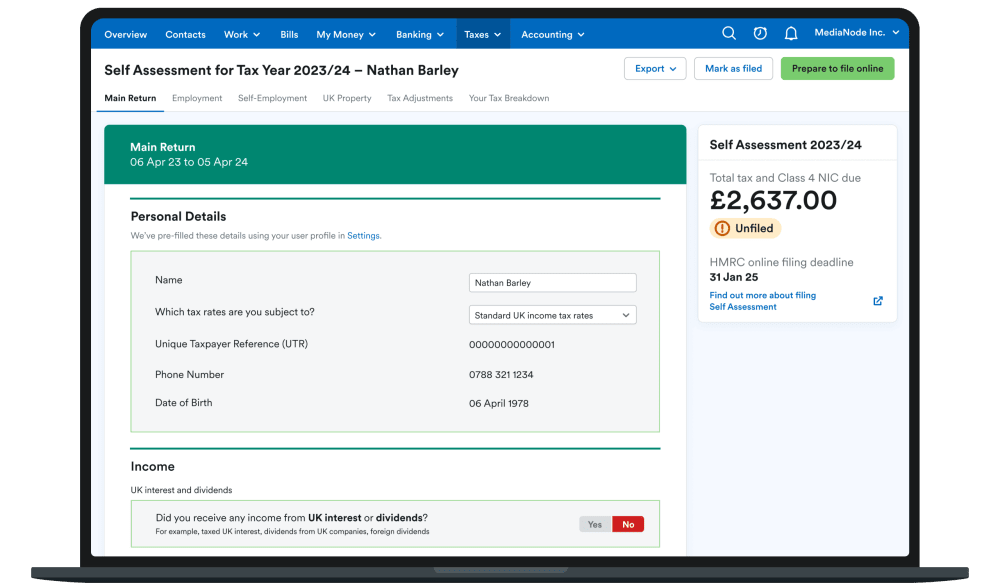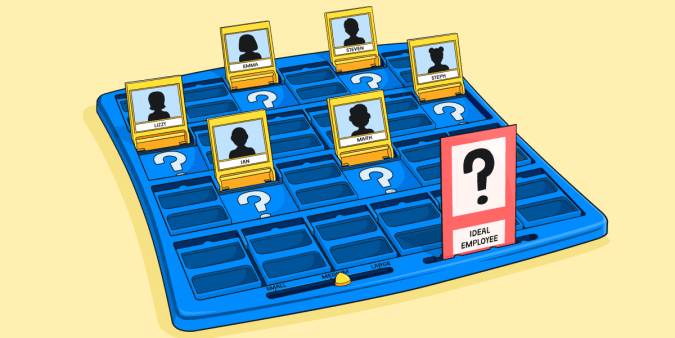How to claim for allowable expenses and other types of tax relief on your Self Assessment tax return

If you’re completing a Self Assessment tax return and you’re in a bit of a rush, it’s easy to miss some of the sections or boxes where you could claim some all-important tax relief. But it’s absolutely worth the effort to seek them out. After all, it will reduce your tax bill if you claim the relief you’re eligible for. Think of this article like a map - we’ll point you towards some of the types of tax relief you might be able to claim for, including allowable expenses, and explain how to do so.
Important: Please check with an accountant if you’re in any doubt about what tax relief you can claim for, or which pages of the Self Assessment tax return you should complete.
The trading allowance
The trading allowance, also known as the trading income allowance, is a tax relief of £1,000 that’s available to many sole traders. The trading allowance isn’t available to partners in a partnership, limited companies or their directors.
If you’re eligible, you can deduct the trading allowance from your income when you work out your taxable profit for the tax year. However, if you choose to claim the trading allowance you won’t be able to claim for any allowable expenses.
How to claim for the trading allowance
If you’re self-employed, how you claim the trading allowance on your Self Assessment tax return will depend on which version of the Self-Employment (SA103) pages you complete:
- If you’re required to complete the short Self-Employment pages, you should enter the amount you wish to claim under the trading allowance in box 10.1.
- If you’re required to complete the full Self-Employment pages, you should enter the amount you wish to claim in box 16.1.
Allowable expenses
If you’re self-employed, it may be possible to deduct some of the business expenses that you incur from your taxable profit when you calculate your income for Self Assessment. HMRC refers to the costs that you can deduct from your taxable profit as ‘allowable expenses’. Remember that you won’t be able to claim for these if you choose to claim the trading allowance.
Examples of allowable expenses might include:
- working from home or office costs
- travel and accommodation costs
- staff costs, including salaries (not including your own drawings if you’re self-employed)
- clothing costs, such as uniforms (but not ordinary clothing)
- materials or products you plan to sell (e.g. stock or raw materials)
- mileage on a vehicle that you use for work
- some financial costs, including certain insurance
- marketing and advertising costs
To qualify as allowable expenses that you can deduct from your taxable profit, these costs must be incurred exclusively in the process of running your business.
For the most part, you’ll calculate your total expenses by keeping track of the costs you incur during the tax year and adding them up when completing your tax return. However, some expenses can be calculated using a simplified flat rate.
Costs that you incur that are not considered by HMRC to be allowable expenses are called ‘disallowable expenses’. You cannot deduct these costs from your taxable profit.
How to claim allowable expenses on your Self Assessment tax return
How you claim for allowable expenses on your Self Assessment tax return will depend on which version of the Self-Employment pages you complete:
- If you’re required to complete the short Self-Employment pages, you can simply add up your allowable expenses and enter the total in box 20. If you choose to, you can also include totals for different types of expenses in boxes 11-19.
- If you’re required to complete the full Self-Employment pages, you’ll need to enter the totals of all the different expenses you have incurred (both allowable and disallowable) in boxes 17-30. You’ll also need to add the value of all your expenses together and enter the total in box 31. If any of the expenses you enter in boxes 17-30 are disallowable, you’ll need to enter these in boxes 32-45 and then put the total value of disallowable expenses in box 46.
If you’re a sole trader, FreeAgent will use the data you enter throughout the year to complete these parts of the sole traders’ Self Assessment tax return for you within the software.
HMRC provides more information about allowable expenses for the self-employed on its website.
Pension contributions
Depending on your circumstances, you may be able to claim tax relief for some contributions you make to a pension during the tax year.
This will usually apply to payments you make into a private pension scheme, and not to pension contributions that an employer (if you have one) has taken from your salary. If you are a higher-rate taxpayer, however, and your employer deducts pension contributions from your salary before tax, you may be able to claim tax relief for them.
HMRC provides more details about what tax relief you can claim for pension contributions on its website.
How to claim for pension contributions
You can claim tax relief for pension contributions on your Self Assessment tax return by entering the relevant information in boxes 1-4 on the ‘Tax Reliefs’ section of the Main Return pages (SA100) of your tax return.
If the total amount that has been added to your pension during the tax year is more than the annual allowance for pension contributions, you may also have to provide more information on the Additional Information (SA101) pages. As always, please speak to an accountant if you’re in any doubt about what information you need to provide.
Charitable donations
If you make any charitable donations during the tax year, you may be able to claim some tax relief for them on your Self Assessment tax return. There are different rules depending on how you make each donation (e.g. whether you use Gift Aid, whether you donate directly from your salary or whether you donate land, property or shares).
HMRC provides more information about when you can claim tax relief for charitable donations on its website.
How to claim for charitable donations
You can claim tax relief for charitable donations on your Self Assessment tax return by entering the relevant information in boxes 5-12 on the ‘Tax Reliefs’ section of the Main Return pages (SA100) of the tax return.
Ready to feel more confident about Self Assessment?
If you’re a sole trader, director of a limited company or unincorporated landlord, FreeAgent automatically generates a Self Assessment tax return for your business that you can file directly to HMRC.
Based on the data you enter throughout the year, FreeAgent populates parts of your tax return with the information that HMRC requires. The software also uses the data to calculate your tax bill and show you how much you owe.
When it’s time to file your Self Assessment tax return, all you need to do is check over the numbers, enter the rest of the required information, and then file it to HMRC directly from FreeAgent.
Find out more about how FreeAgent can help with Self Assessment and start your 30-day free trial today.
Originally published
Last updated
Disclaimer: The content included in this blog post is based on our understanding of tax law at the time of publication. It may be subject to change and may not be applicable to your circumstances, so should not be relied upon. You are responsible for complying with tax law and should seek independent advice if you require further information about the content included in this blog post. If you don't have an accountant, take a look at our directory to find a FreeAgent Practice Partner based in your local area.



